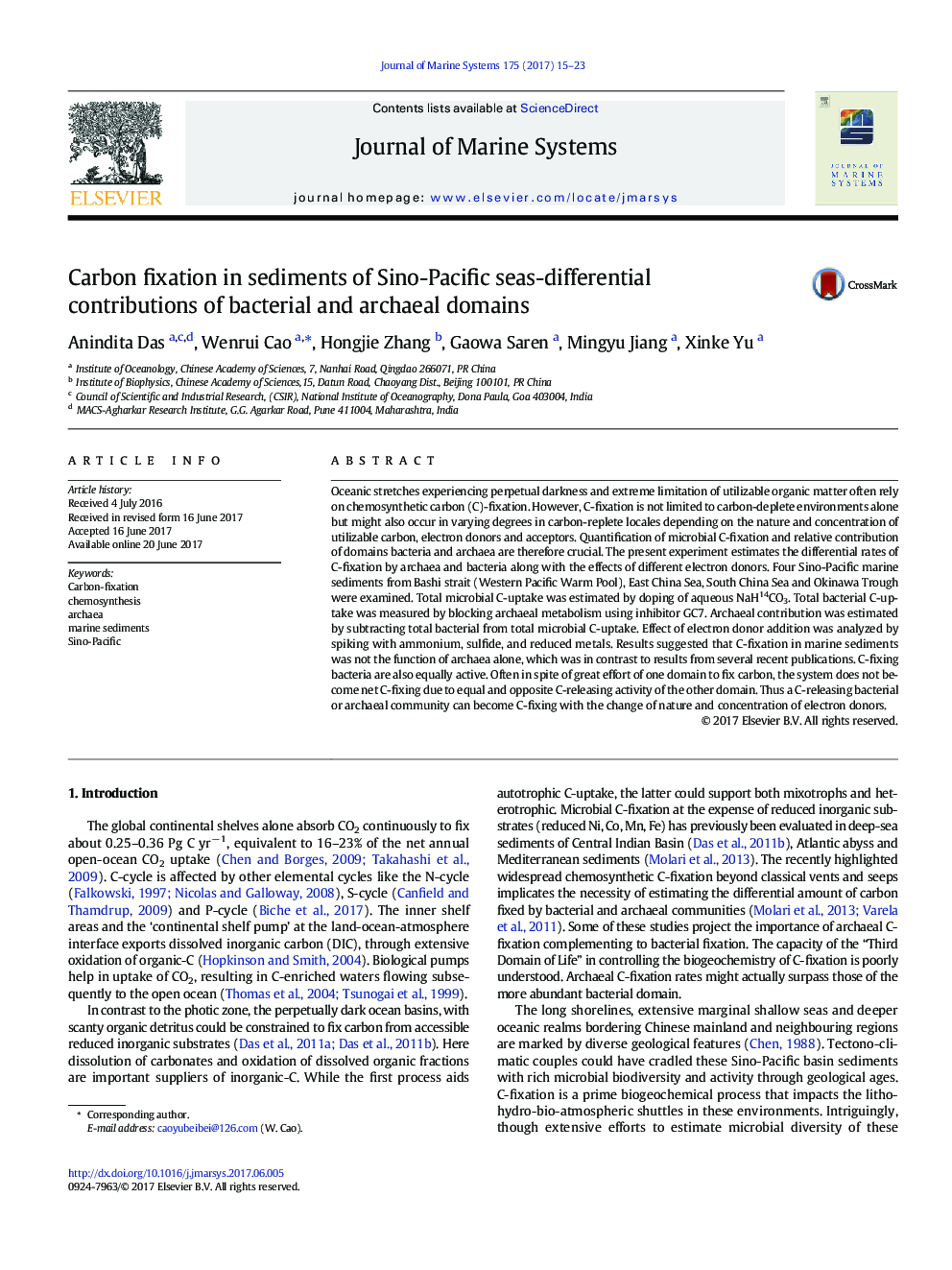| کد مقاله | کد نشریه | سال انتشار | مقاله انگلیسی | نسخه تمام متن |
|---|---|---|---|---|
| 5765951 | 1627255 | 2017 | 9 صفحه PDF | دانلود رایگان |
- Quantification of relative bacterial and archaeal C-fixation are crucial
- C-fixation in Sino Pacific sediments was a mutualistic function of the two domains.
- C-releasing microbial community can become C-fixing with change in nature and concentration of electron donors.
Oceanic stretches experiencing perpetual darkness and extreme limitation of utilizable organic matter often rely on chemosynthetic carbon (C)-fixation. However, C-fixation is not limited to carbon-deplete environments alone but might also occur in varying degrees in carbon-replete locales depending on the nature and concentration of utilizable carbon, electron donors and acceptors. Quantification of microbial C-fixation and relative contribution of domains bacteria and archaea are therefore crucial. The present experiment estimates the differential rates of C-fixation by archaea and bacteria along with the effects of different electron donors. Four Sino-Pacific marine sediments from Bashi strait (Western Pacific Warm Pool), East China Sea, South China Sea and Okinawa Trough were examined. Total microbial C-uptake was estimated by doping of aqueous NaH14CO3. Total bacterial C-uptake was measured by blocking archaeal metabolism using inhibitor GC7. Archaeal contribution was estimated by subtracting total bacterial from total microbial C-uptake. Effect of electron donor addition was analyzed by spiking with ammonium, sulfide, and reduced metals. Results suggested that C-fixation in marine sediments was not the function of archaea alone, which was in contrast to results from several recent publications. C-fixing bacteria are also equally active. Often in spite of great effort of one domain to fix carbon, the system does not become net C-fixing due to equal and opposite C-releasing activity of the other domain. Thus a C-releasing bacterial or archaeal community can become C-fixing with the change of nature and concentration of electron donors.
Journal: Journal of Marine Systems - Volume 175, November 2017, Pages 15-23
